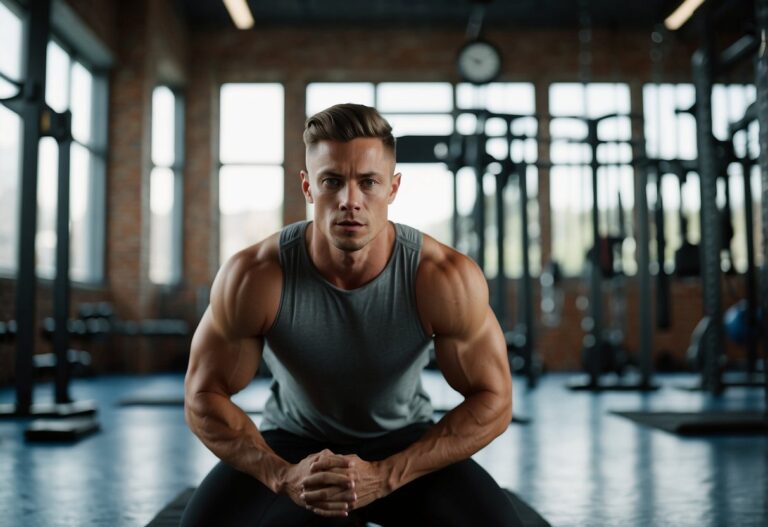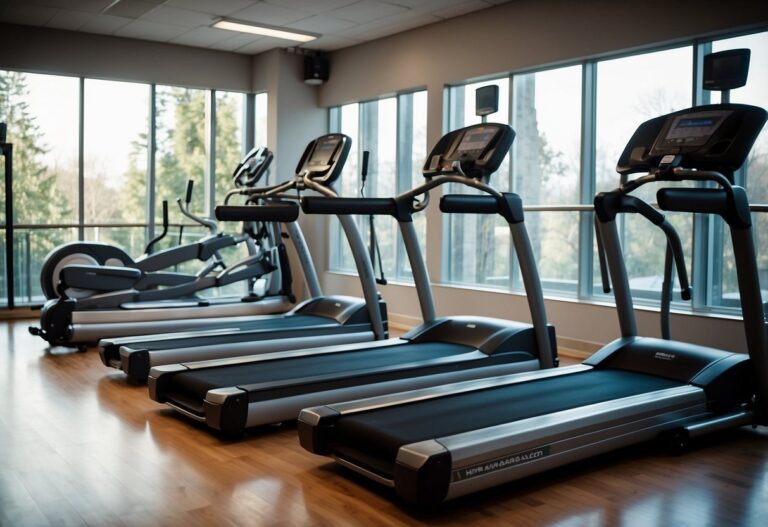Are you looking to make the most out of your workout routine? Whether you’re new to fitness or an experienced gym-goer, knowing a variety of workout tips and techniques can greatly enhance your results. From different exercise methods to simple adjustments in your routine, these insights can help you achieve your fitness goals more efficiently.

What can you do to get better results from your workouts? By exploring various tips and techniques, you can find new ways to challenge yourself and stay motivated. These strategies not only make your workouts more effective but also more enjoyable, ensuring that you remain committed to your fitness journey.
Maintain Proper Form
Using proper form during workouts is crucial. Good form helps you get the best results and prevents injuries. When lifting weights, always use the full range of motion. This means moving your joints completely for each exercise.
Keeping your posture right is another key aspect. Whether you are running or lifting weights, maintain a straight, aligned body. This can make a big difference in your performance.
If you struggle to keep good form, consider lowering the weight or doing fewer repetitions. It is better to do fewer reps correctly than more with poor form, risking injury.
During running exercises, keep your arms and hands relaxed. Avoid clenching your fists, as this can cause unnecessary tension. Instead, pretend you are gently holding an egg in each hand that you do not want to crack.
For more detailed tips on maintaining form while running, check out these running form tips. And if you are into weight training, you might find this advice on weight training techniques helpful.
Focus on Compound Movements
When working out, compound movements are key. These exercises engage multiple muscle groups at once, making your workout more efficient.
Think about exercises like squats, deadlifts, or bench presses. These moves help build strength and muscle by targeting several parts of your body simultaneously.
For example, a squat works your legs, glutes, and core. This means you spend less time working out individual muscles and more time getting strong overall.
If you’re a beginner, start with lighter weights. Focus on your form to prevent injuries and maximise gains. Gradually increase the weight as you get stronger and more confident.
Incorporating compound movements can also boost your metabolism. They burn more calories, even after your workout is finished, which is great for those looking to manage their weight.
Next time you hit the gym, try adding exercises like push-ups and deadlifts to your routine. You’ll find yourself getting stronger and more fit in no time.
For more detailed exercise lists, check out these best compound exercises or explore full-body workout ideas.
Incorporate Intervals
Interval training is a fantastic way to boost your running performance. It involves alternating between high-intensity bursts of speed and periods of rest or low-intensity activity.
You might start with a warm-up, and then run hard for 30 seconds followed by a rest period of 60 seconds. This simple approach helps prevent injuries and increases endurance.
For beginners, a 1:2 work-to-rest ratio is effective. So, if you run fast for one minute, take a two-minute rest before the next burst. This method gradually builds your stamina and speed.
To keep it fun and challenging, vary your intervals. Try running for one minute at a high intensity and then two minutes at a slower pace, repeating the cycle multiple times. If you want specific examples, check out the Running Advisor’s guide.
Ensure you warm-up properly with dynamic stretches or a light jog before starting your intervals. This preps your muscles and reduces the risk of injury. If you’re new to this type of training, follow experts who suggest a balanced approach, such as those from Runner’s World.
Remember, it’s important to listen to your body. Start slow and gradually increase intensity to match your fitness level. Interval training can be challenging, but it’s incredibly rewarding and effective.
Stay Hydrated
Drinking enough water is crucial when you work out. Dehydration can seriously impact your performance, causing fatigue and dizziness. Make sure you drink water regularly during your exercise routine.
Before you start your workout, it’s a good idea to drink about 16-20 ounces of water. This helps you begin hydrated, ready to take on your exercises. During your workout, take small sips of water every 15 minutes to keep your hydration levels up.
After your workout, rehydrate by drinking water to replace the fluids lost. If you sweat a lot, consider a sports drink to replenish lost electrolytes. Sip water throughout the day to maintain hydration.
For more details, check out this hydration guide.
Get Enough Sleep
To perform your best during workouts, getting enough sleep is crucial. Aim for 7-9 hours of quality sleep each night. This helps your body recover and get stronger.
Avoid caffeine and heavy meals before bed. These can keep you awake and mess up your sleep.
Engage in regular, moderate exercise. Just 30 minutes a day can make it easier to fall asleep and improve sleep quality. Also, consider activities like yoga to calm your mind and body in the evening.
Practice relaxing techniques such as deep breathing exercises. For example, tense your muscles for 10 seconds, then relax and breathe deeply. Repeat this for different muscle groups to help you wind down. For more tips, check out how to fall asleep faster and sleep better.
Warm Up Thoroughly
Before diving into your workout, it’s crucial to warm up thoroughly. Start with light cardio exercises like jogging on the spot or jumping jacks for about 5 to 10 minutes. This helps to get your blood flowing and muscles ready.
Next, try doing some dynamic stretches. Moves like bodyweight squats, lunges, and arm circles are perfect. These exercises increase your range of motion and prepare your body for more intense activity.
Incorporate exercises that mimic the movements you’ll be doing in your workout. For example, if you’re planning to do push-ups, start with some easier variations like counter push-ups. This ensures your muscles are properly activated.
Balance Strength and Cardio
Combining strength and cardio training is a smart way to maximise your workouts. By alternating between the two, you can get more benefits in less time.
Circuit training is a great option. For example, perform strength exercises for 45 to 60 seconds, followed by 30 seconds of cardio. This method keeps your heart rate up and works your muscles.
Strength exercises could include squats, push-ups, and lunges. For cardio, try jumping jacks or high knees. Mixing these elements keeps your routine exciting and effective.
If you’re focused on increasing strength, prioritise resistance training. Limit cardio sessions to one or two times a week. This approach allows your muscles to recover and grow.
Use Progressive Overload
If you want to get stronger and build muscle, you should consider progressive overload. This means gradually increasing the difficulty of your workouts.
For example, if you’re doing push-ups, try adding a few more each week.
You can also increase the weight you lift or slow down your tempo in exercises like squats or pull-ups. This method ensures your muscles stay challenged and continue to grow. Gradually increasing the weight or reps keeps your workouts effective and helps you avoid a plateau.
Progressive overload is a proven way to see consistent improvement in your fitness routine.
Mind Your Nutrition

Eating the right foods can make a big difference in your workouts. Before you exercise, aim for a mix of carbs and protein. A banana with peanut butter or a piece of toast with some eggs can give you the energy you need.
During your workout, staying hydrated is key. Drink plenty of water and consider sports drinks if you’re doing long sessions. Hydration helps keep your energy levels up.
After working out, refuel with a mix of protein and carbs. A protein shake or a meal with chicken and rice can help your muscles recover faster.
Listen to Your Body
When you work out, it’s crucial to listen to your body. Paying attention to your body’s signals helps you avoid injury and make your workouts more effective.
Start by recognising your body’s basic signals, like hunger, thirst, and fatigue. These cues are important for understanding how ready you are for a workout. If you’re feeling tired, it might be a sign to rest rather than push through another session.
Tuning into your mind-body connection can guide your movements. For instance, if a particular exercise feels off or painful, it’s a good idea to stop and reassess. Maybe try a less intense movement or give that muscle group a break.
Sometimes, you might need to adjust your workout intensity based on how you feel. If your body is signalling fatigue, it’s perfectly fine to embrace a rest day. Remember, rest is just as important as activity in maintaining a healthy fitness routine.
Listening to your body becomes an ongoing dialogue. Each workout gives you feedback. Reflecting on how you feel after each session can help you tweak your routines for better results. Learn to trust these signals and adjust accordingly.
By listening to your body, you can ensure a safer and more satisfying fitness journey. For more tips, you can check out advice from fitness experts or read about how to avoid overtraining.
Understanding Workout Principles
Effective workouts are built on solid principles that ensure every session is both safe and productive. Let’s explore the essential elements of a workout plan.
The Importance of Warm-Ups and Cool-Downs
Warm-ups are crucial because they prepare your body for the intense activity ahead. They increase blood flow to your muscles, which can help prevent injuries. Start with light cardiovascular activities like jogging or skipping. Follow this with dynamic stretches, such as leg swings or arm circles, to increase muscle flexibility.
After your workout, cool-downs are equally important. They help your heart rate and breathing return to normal gradually. Cool-downs can include slow walking and static stretching, which can help reduce muscle stiffness and soreness. Spending at least 5-10 minutes on each of these phases can dramatically improve your overall workout experience.
Building a Balanced Routine
A balanced routine ensures all muscle groups are worked on, which promotes overall body fitness and prevents under or overtraining specific areas. Your routine should include aerobic exercises like running or swimming for cardiovascular health. Strength training, such as lifting weights or using resistance bands, helps build muscle.
Incorporate flexibility exercises, like yoga or Pilates, to improve your range of motion. Ensure you have rest days in your routine, allowing your body time to recover and grow stronger. A well-rounded workout plan is key to achieving long-term fitness goals and maintaining overall health. Pay attention to how your body feels and adjust your routine to avoid burnout or injury.
Mastering Techniques for Different Workouts

When it comes to improving your workouts, mastering specific techniques can make all the difference. Whether it’s maintaining the right form, optimising your strength training, or enhancing your cardiovascular workouts, each detail contributes to better results and fewer injuries.
Correct Form and Posture
Focusing on correct form and posture is essential to prevent injuries and get the most out of your exercises. For instance, when performing a squat, ensure your back is straight, knees are aligned with your toes, and you’re lowering your body as if sitting on a chair. Incorrect form can lead to strain and long-term issues.
In moves like the bench press, keeping your feet flat on the floor and maintaining a slight arch in your back helps to stabilise the weight. Consistently practising correct posture builds muscle memory, making it easier to perform exercises safely and effectively.
A handy trick is to use mirrors or record yourself. Observing your form allows you to adjust and improve, much like a coach would. Always choose quality over quantity; fewer reps with proper form are more beneficial than many with poor technique.
Optimising Strength Training
To optimise strength training, focus on a mix of compound movements such as deadlifts, squats, and bench presses. These exercises engage multiple muscle groups, making your workout more efficient. Incorporating proper weightlifting techniques like the clean and jerk enhances both strength and coordination.
Aim for progressive overload by gradually increasing the weights you lift. This stimulates muscle growth and strength gains. For example, if you’re comfortable with a certain weight, try increasing it slightly in your next session.
Rest periods between sets are vital. A general rule is 60 to 90 seconds for hypertrophy (muscle growth) and 2 to 3 minutes for strength. Remember to listen to your body. If it feels too easy, you may need to increase the challenge; if it’s too hard, adjust accordingly.
Enhancing Cardiovascular Workouts
Enhancing cardiovascular workouts involves varying the intensity and types of exercises you do. For instance, instead of just running at a steady pace, try interval training. Alternate between sprinting and walking to boost your heart rate and burn more calories in shorter time.
Incorporate a mix of activities like cycling, swimming, and rowing to keep things interesting and work different muscles. Using a heart rate monitor can ensure you’re working within your target heart rate zone, maximising your cardiovascular benefits.
Improving cardiovascular endurance also includes proper breathing techniques. Try to breathe deeply and evenly, which helps in supplying oxygen efficiently to your muscles. Moreover, setting small, achievable goals, like improving your running distance each week, keeps you motivated and tracks your progress.
By focusing on these techniques, you’ll improve your workout efficiency, reduce the risk of injury, and see better results over time.
Advanced Tips for Maximum Results
To get the most out of your workouts, you need advanced techniques that push you beyond your current limits. Two effective methods to consider are incorporating high-intensity interval training (HIIT) and utilising progressive overload. These approaches can significantly enhance your performance and results.
Incorporating High-Intensity Interval Training (HIIT)
HIIT involves short bursts of intense exercise followed by brief rest periods. This method is excellent for burning fat, improving cardiovascular health, and building endurance. For example, you might sprint for 30 seconds, rest for 30 seconds, and repeat.
A typical session can be as short as 20 minutes but can torch calories and boost your metabolism for hours after. The beauty of HIIT is its flexibility. You can adjust the intensity and duration of the intervals to suit your fitness level. Try mixing different exercises like sprints, cycling, or bodyweight moves to keep it engaging.
Utilizing Progressive Overload
Progressive overload is about gradually increasing the stress you place on your muscles to make them stronger and bigger. You can do this by increasing weights, reps, or sets, or even reducing rest time between sets. For instance, if you’re bench pressing, add a small amount of weight each week.
A key part of progressive overload is tracking your progress. Use a workout journal or an app to note down your weights, reps, and sets. This helps you keep track of improvements and know when to push harder. Remember, the goal is consistent, gradual progress to avoid injury and plateauing.







